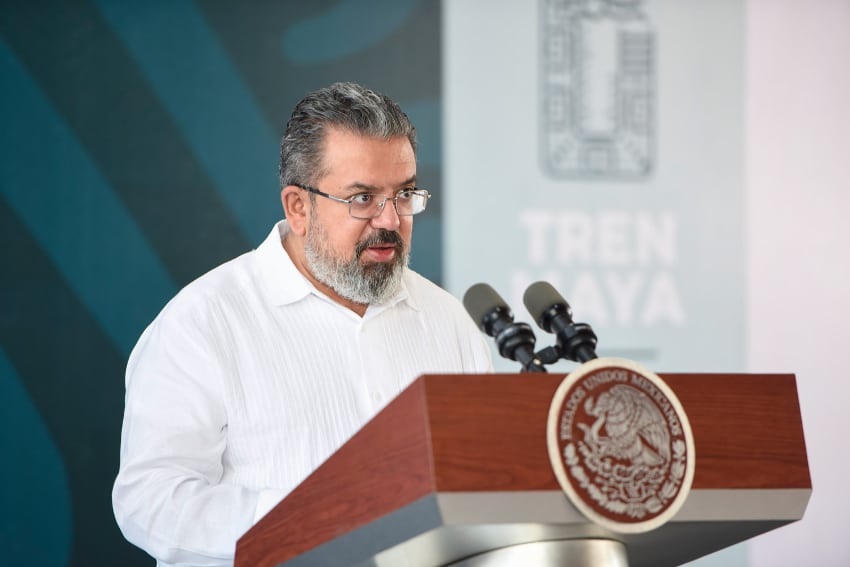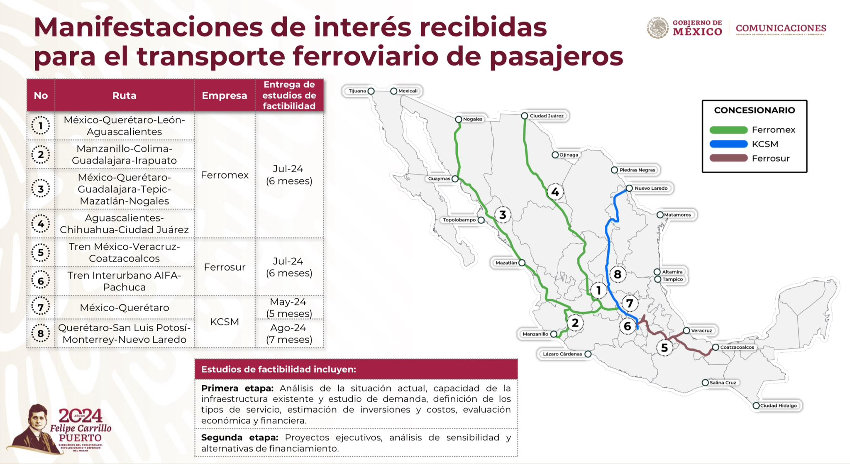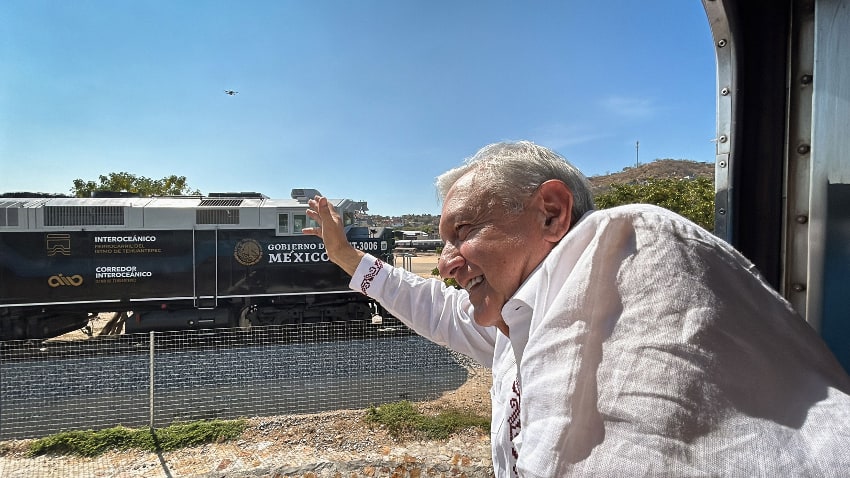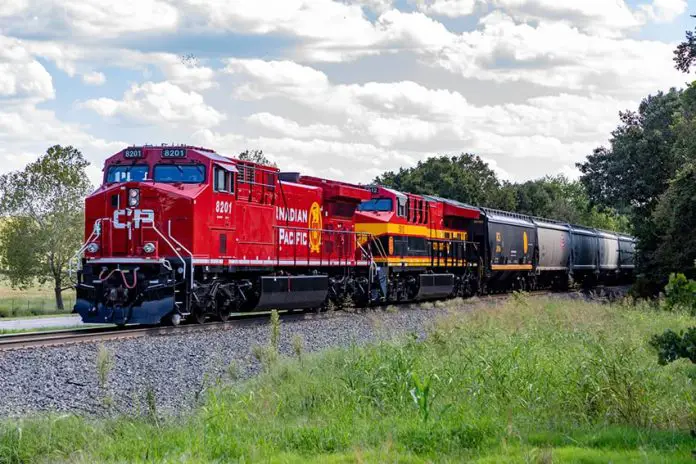Private rail companies have submitted eight proposals to the federal government to operate passenger trains on railroad routes that are currently only used by freight trains.
The government in January said it had received five proposals from companies interested in operating passenger train services on existing freight tracks, and last week revised the figure to eight.

Infrastructure, Communications and Transport Minister Jorge Nuño presented details of the proposals at President Andrés Manuel López Obrador’s Feb. 28 press conference. Six come from Grupo México via its subsidiaries Ferromex and Ferrosur and two were submitted by Canadian Pacific Kansas City (CPKC).
According to the information presented by Nuño, Ferromex has submitted proposals to operate passenger trains on four routes:
- Mexico City-Querétaro-León-Aguascalientes
- Manzanillo-Colima-Guadalajara-Irapuato
- Mexico City-Querétaro-Guadalajara-Tepic-Mazatlán-Nogales
- Aguascalientes-Chihuahua-Ciudad Juárez
Ferrosur has expressed interest in operating passenger trains on two routes:
- Mexico City-Veracruz-Coatzacoalcos
- AIFA-Pachuca (AIFA is the Felipe Ángeles International Airport, located north of Mexico City in México state)
CPKC (formerly known in Mexico as Kansas City Southern de México) has also submitted proposals for two routes:
- Mexico City-Querétaro
- Querétaro-San Luis Potosí-Monterrey-Nuevo Laredo
The submission of the proposals comes after López Obrador — an avowed train enthusiast — published a decree in November that established the provision of passenger train services as a priority for national development.
The decree said that companies with concessions for freight tracks would be “the first to be invited to present projects for the implementation of passenger train services” on a range of different routes.
Nuño told reporters that the private rail companies that submitted proposals are currently carrying out feasibility studies that are scheduled to be completed in the next five to seven months. They are seeking to determine how much they would need to invest in their proposed projects, he said.

Getting tracks ready for use by passenger trains might not be cheap, although López Obrador has claimed that it wouldn’t be a costly undertaking.
The consultancy Alttrac estimates that upgrading the 18,000 kilometers of tracks that make up the national rail network so that they can be simultaneously used by passenger and freight trains would cost some 1.8 trillion pesos (US $107 billion).
Passenger trains used to operate all over Mexico, but services fell by the wayside after the privatization of the rail network in the mid 1990s.

In building the Maya Train railroad in Mexico’s southeast and modernizing an existing line across the Isthmus of Tehuantepec between Salina Cruz, Oaxaca, and Coatzacoalcos, Veracruz, López Obrador has gone some way towards restoring passenger train services.
However, he would like to see rail travel in Mexico return to its heyday, although he has acknowledged that it will be up to the next federal government to follow through on his initiative, something that Claudia Sheinbaum — the heavy favorite to win the June 2 presidential election — has pledged to do.
Earlier this year, López Obrador asserted that public and private investment in rail projects would create jobs and “reactivate the economy of the entire country.”
He also claimed that reviving nationwide train travel wouldn’t be an expensive exercise.
“What will it cost? Nothing,” he said, adding that the project would involve nothing more than “fixing the tracks up a bit” and “buying passenger trains — just as we did in the Isthmus [of Tehuantepec].”
With reports from AP, El Universal and Reforma
